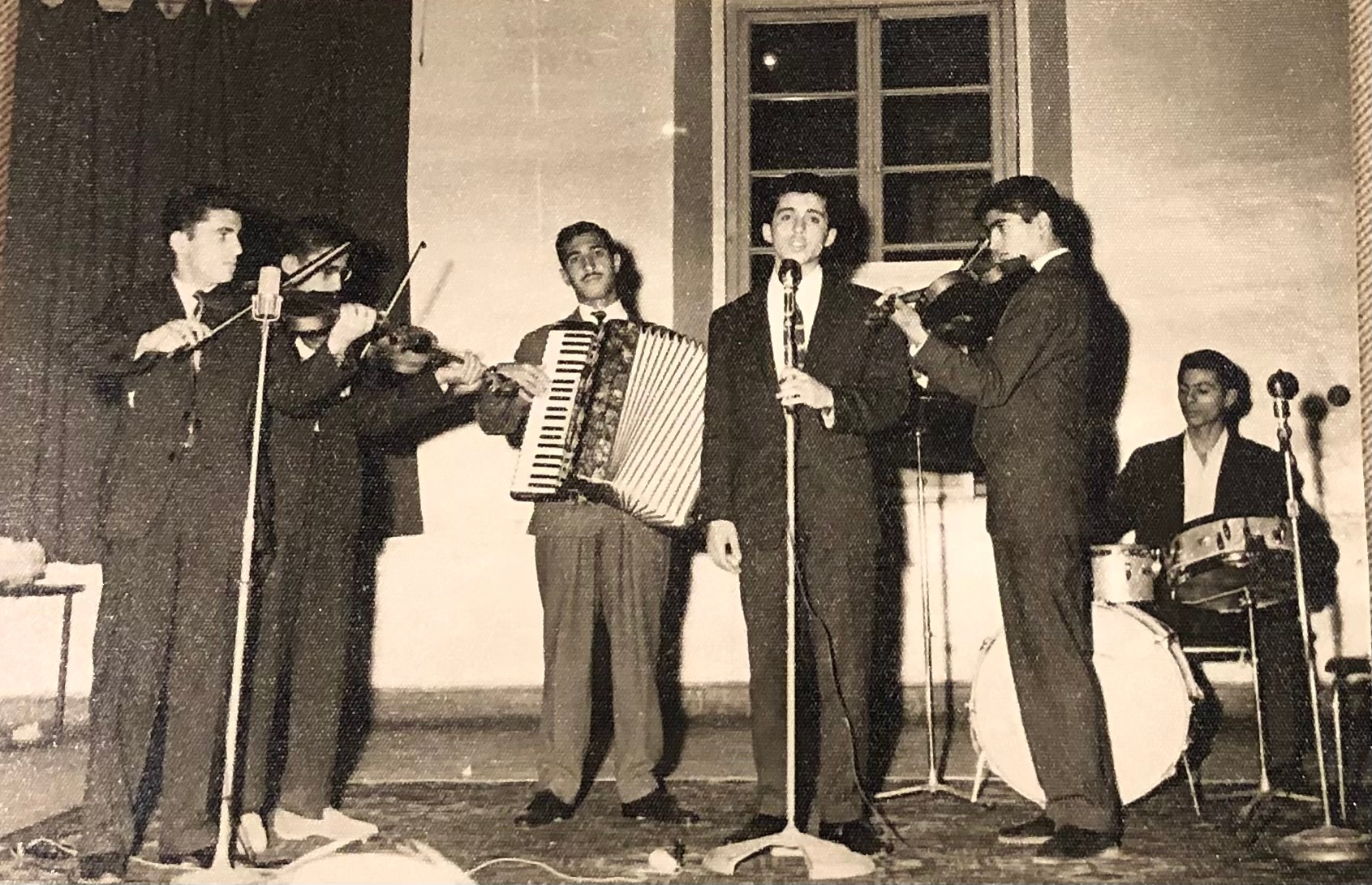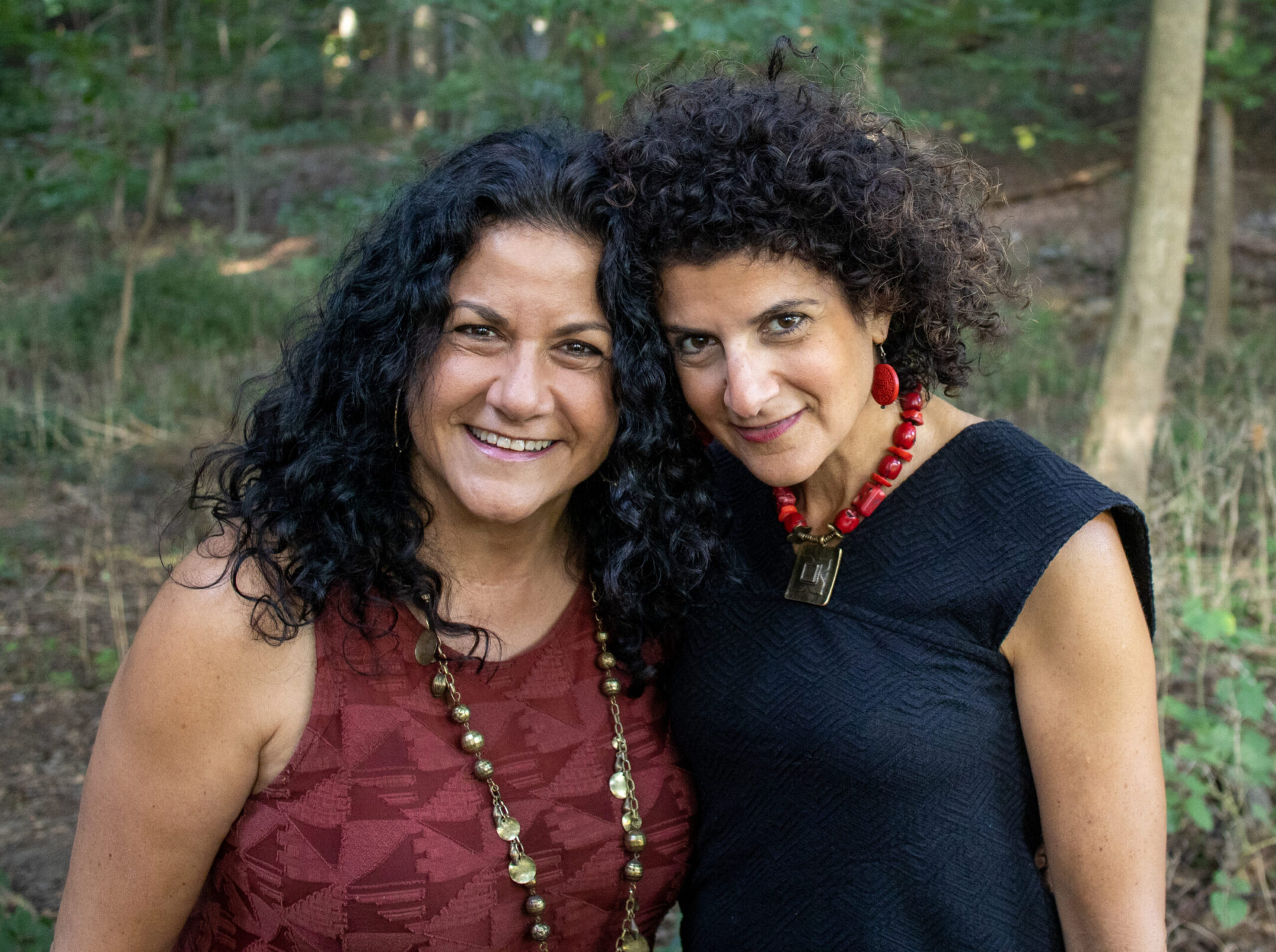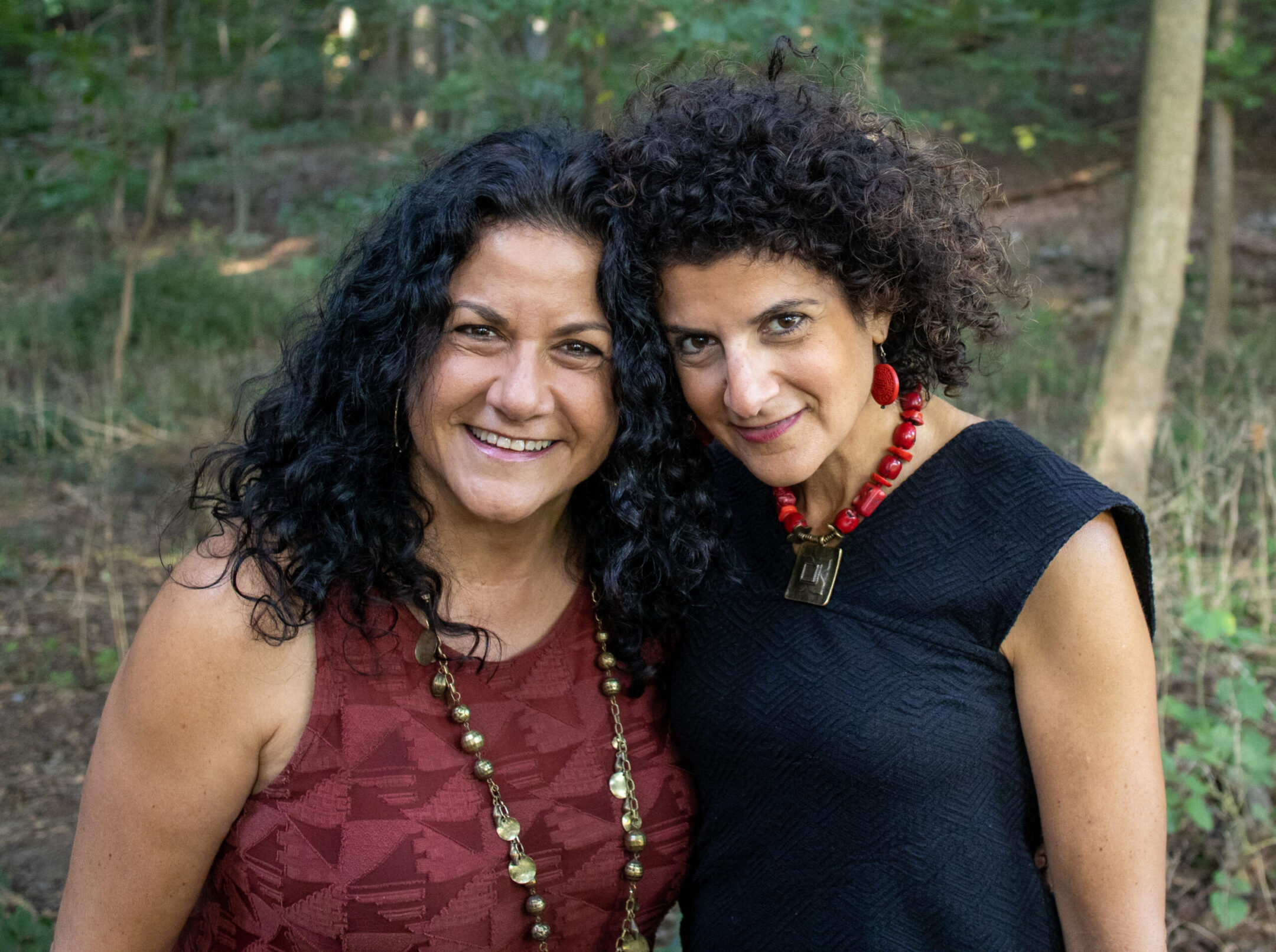(JR) — Sisters Danielle and Galeet Dardashti grew up with the lore of their grandfather, Younes Dardashti. An Iranian musical icon who sang at the palace of Mohammad Reza Shah, he traversed the country’s concert halls and drew Iranians to their radios every week from the 1940s to the 1960s.
Known as the “Nightingale of Iran” for his powerful voice, Younes Dardashti was the only Jewish singer in the history of recorded classical Persian music to win broad national acclaim as an “ustad,” or “maestro,” vocalist. He commanded the style of “āvāz,” a way of putting classical Persian poetry to song and improvising like a jazz musician.
“He had a very unusual vocal ability,” Galeet Dardashti told the Jewish Telegraphic Agency. “And that mixed with this time in Iran, when music was suddenly valued in popular culture. Radio hadn’t been around for that long and there were suddenly huge radio stars.”
In the Dardashti family, his Jewish musical legacy was cherished and passed down through generations. Their father, Younes’ son Farid, became a teen idol, singing on Iranian TV in the 1960s before leaving to study in the United States. There he met their mother, Sheila, an Ashkenazi folk singer from New York. As children, Danielle, Galeet and their sister Michelle (now the rabbi at Brooklyn’s Kane Street Synagogue) traveled the country with their parents in a Jewish American family band — The Dardashti Family.
It was only when the sisters began researching their grandfather that another image emerged — that of a Jewish Iranian artist who never found the same acceptance among Jews as he did with Iran’s Muslim public, an audience he would ultimately lose in the Iranian Revolution. Performing under the shadow of a stigmatized tradition, in which Jews barred from many industries were historically overrepresented as hired musicians or “motrebs,” Younes left Iran during a short-lived golden age for its Jewish minority.
This painful layer below his famed career is the subject of “The Nightingale of Iran,” a six-episode podcast series created by Danielle, a documentarian, and Galeet, a musician and anthropologist, and presented by the JR.
Register here to join JR and the Dardashti sisters for a virtual conversation about “The Nightingale of Iran,” Tuesday, March 12 at 6 p.m. ET.
Little of their story came directly from Younes, who died in Israel in 1993. While he was alive, the granddaughters did not share a language with him, and they said he never showed a great inclination to tell his tale.
“He sang and told jokes, but he wasn’t a talker about himself,” said Danielle.
Instead, Danielle and Galeet relied on interviews with their father and scholars of their grandfather’s heyday — along with hundreds of audiotapes they found piled in boxes one day in their parents’ basement in New Rochelle, a suburb of New York City.
“The Nightingale of Iran” is a six-episode podcast series created by Younes Dardashti’s grandchildren about his life and career. (PRX)
After Farid left Iran for college in the United States, he and his family sent each other tapes with messages and snippets from their daily lives, a much cheaper way of communicating than long-distance phone calls at the time. This stash of recordings spanned decades — bulky reels from the 1960s, cassettes from the 1970s and VHS tapes from the 1980s and 1990s. They opened a time portal to Iran’s rapid modernization and upheaval, to Younes’s radio show, to family celebrations, hopes and loss across the oceans.
One of the greatest treasures came from the later years. It was a tape from 1992, six months before Younes’ death, when Farid interviewed him in Persian. Farid himself had never listened back to the recording.
Through that tape, Danielle and Galeet learned about the tragedy of their grandfather’s early life. Born around 1899 in Tehran’s mahaleh, or Jewish ghetto, Younes Dardashti started learning the traditional Persian musical modes from his father, a cantor, at age 5. But when he was 7, both of his parents died. He and his siblings were separated and sent to live with different relatives. For 10 years, Younes lived with an uncle who physically abused him, forced him to leave school for physical labor and forbade him from singing — although he persisted in secret.

Farid Dardashti, Younes’ son and Galeet and Danielle’s father, sings in Iran in the 1960s, when he was a teen idol on TV in the country. (Courtesy Dardashti family)
At 17, Younes moved out and took a job at the Iranian national railroad. With his newfound freedom, he found a teacher with whom to study the Persian musical modes and volunteered to sing in Tehran’s synagogue on Shabbat and holidays. One of his admirers at the synagogue chose Younes to marry his daughter Houri, Danielle and Galeet’s grandmother.
The couple saw Tehran undergo extraordinary changes after 1941, when Mohammad Reza Shah Pahlavi became Iran’s ruler. The new shah continued his father’s reforms to modernize, centralize and secularize Iran, granting new civil rights to women and religious minorities. Jews were allowed to move out of the ghetto and attend integrated schools. At parties in Tehran, Jews mingled with Muslims while men and women danced to secular music.
The reign of Mohammad Reza Shah, which lasted until the Iranian Revolution of 1978 and 1979, is often called a “golden age” for Iranian Jews. New economic opportunities, combined with the shah’s de-emphasis of Islam as a core element of Iranian identity, gave Jews unprecedented upward mobility in commerce, scholarship, medicine and the arts.
At one party in a Tehran home, Younes’s singing voice caught the ear of Qamar-ol-Moluk Vaziri, the first Iranian woman to sing in public without a veil and a superstar of the time. Younes recounted their meeting in his interview with Farid, but the story has also been popularized in Iranian music lore. Vaziri ran to Younes and asked why she had never heard him sing. Younes said he was Jewish; Vaziri dismissed the explanation — it was a new country now, she said, and people had to hear that voice no matter his religion.
That moment, according to Younes, turned him into the “Nightingale of Iran.” Recognized for his technical prowess and vast vocal range, Younes rose to national fame and became a favorite of the shah. In 1947, he began performing on Radio Tehran in a weekly primetime spot that he held for nearly 19 years.
But in the midst of his celebrity, Danielle and Galeet believe their grandfather suffered from a lack of belonging. They discovered that while Younes was beloved by the Muslim Iranian public, it was harder to find fans among his country’s Jews.

Danielle Dardashti, left, and her sister Galeet Dardashti explore their family’s musical history in the podcast “The Nightingale of Iran.” (Courtesy Dardashti family)
That disconnect followed a historical stigma attached to professional Jewish musicians. Since the 16th century, Jews were the most prevalent minority to work as “motrebs,” or musicians hired to perform at life-cycle ceremonies and other social events. Both Muslims and Jews looked down on motrebs as morally suspect. But since strict laws restricted Jews from physical contact with Muslims based on their supposed “najāsat” (uncleanness), many Jews had few other options to make a living.
For five centuries, these Jewish musicians were outcasts both in the broader society and in their own religious community. On top of the job’s low social status, they were often marginalized by other Jews for socializing with Muslims, eating non-kosher food in the homes of their employers and working at all hours of the night.
This history haunted Younes’s success. Despite winning national adoration as a master of Persian music, he carried a sense of shame in his own Jewish community, according to Danielle and Galeet.
“It was a Jewish job for all those years,” said Danielle. “And there were people who didn’t want it to be a Jewish job anymore, because of the pain that came with being forced into those kinds of roles.”
Even as Younes faced this conflict in his own identity, Iranians tuning in to his voice on the radio connected over the shared identity of a proud music history. It was those very sounds they heard — the classical melodies and techniques — that motrebs, many of them Jewish, had preserved in the Persian tradition. Scholars have pointed out that until gramophones and radios were widely available by the mid-20th century, motrebs were nearly the exclusive source of music for all Iranians.
Danielle and Galeet believe their grandfather’s yearning for belonging may have contributed to his departure from Iran. Younes was still a prominent star when he immigrated to Israel in 1967, together with Houri and one child (their four others, including Farid, had already moved out). He continued traveling between Israel and Iran for the next 10 years.
But after the Iranian Revolution, Younes could never return to his home country. His favor with the deposed shah put him in danger with the new rulers of the Islamic republic, where religious militias killed perceived enemies of the revolution. The majority of Iran’s 60,000 Jews emigrated over the decade following the revolution, driven by political turmoil and anxiety about the future. The government’s imprisonment of several prominent Jews, along with its execution of the Jewish philanthropist Habib Elghanian in May 1979 after he was accused of spying for Israel, intensified their exodus. Today, about 8,000 Jews remain in Iran.
Most of the tapes of Younes Dardashti, officially chronicling his career in concert halls and radio programs, were either destroyed or lost in the revolution. Since he never recorded an album, much of his music was erased from history. He never found a broad audience in Israel, where the society was more interested in Western popular culture and often discriminated against Iranians and other Mizrahi Jews. The recent mainstreaming of Mizrahi culture came too late for Younes and the world he represented.
For Danielle and Galeet, “The Nightingale of Iran” is a way of reincarnating their grandfather’s voice along with his legacy. In September, Galeet released “Monajat,” an album in which her own singing voice intertwines with her tapes of Younes Dardashti.
“People don’t know these stories about these master musicians who were Jewish, but who were also deeply Persian,” said Galeet. “It is sad to me, especially given the current political climate, where people think that Jews and Muslims are so far apart and don’t know about this shared culture.”




